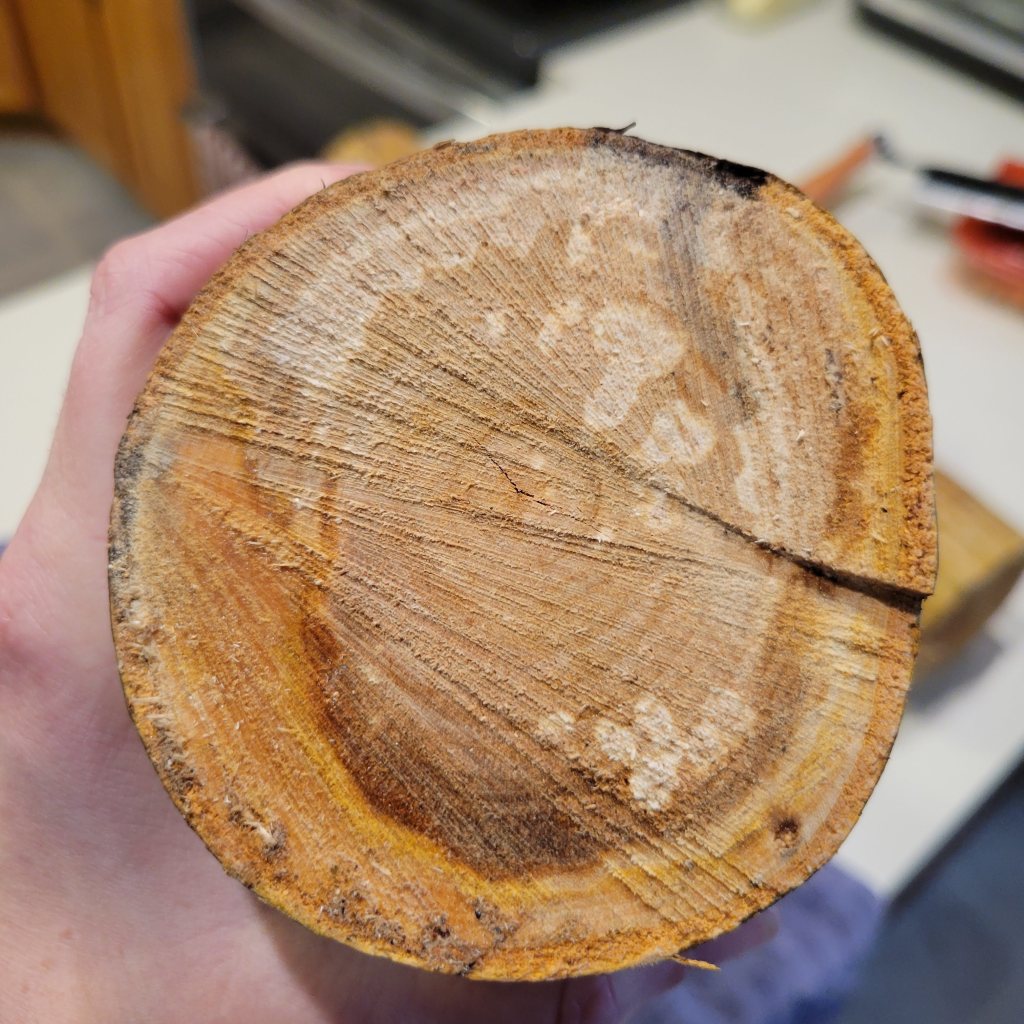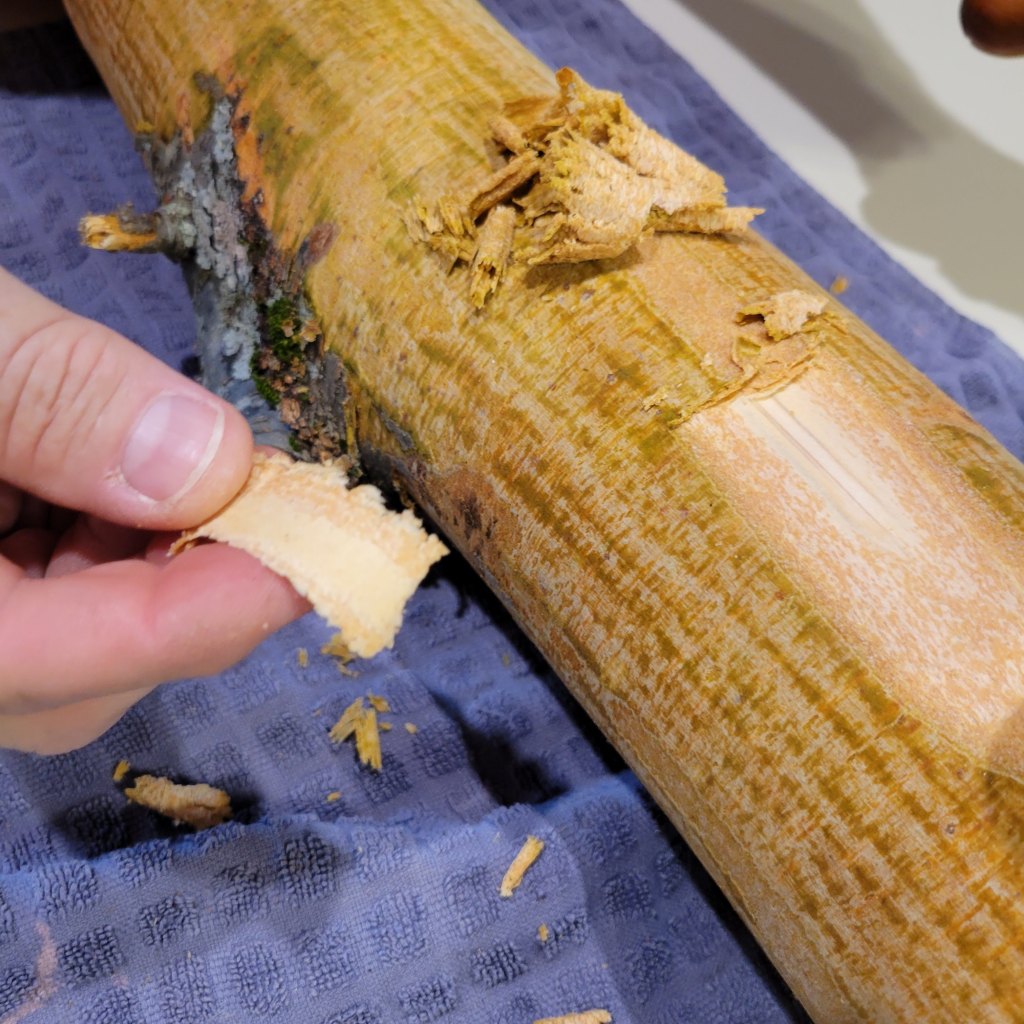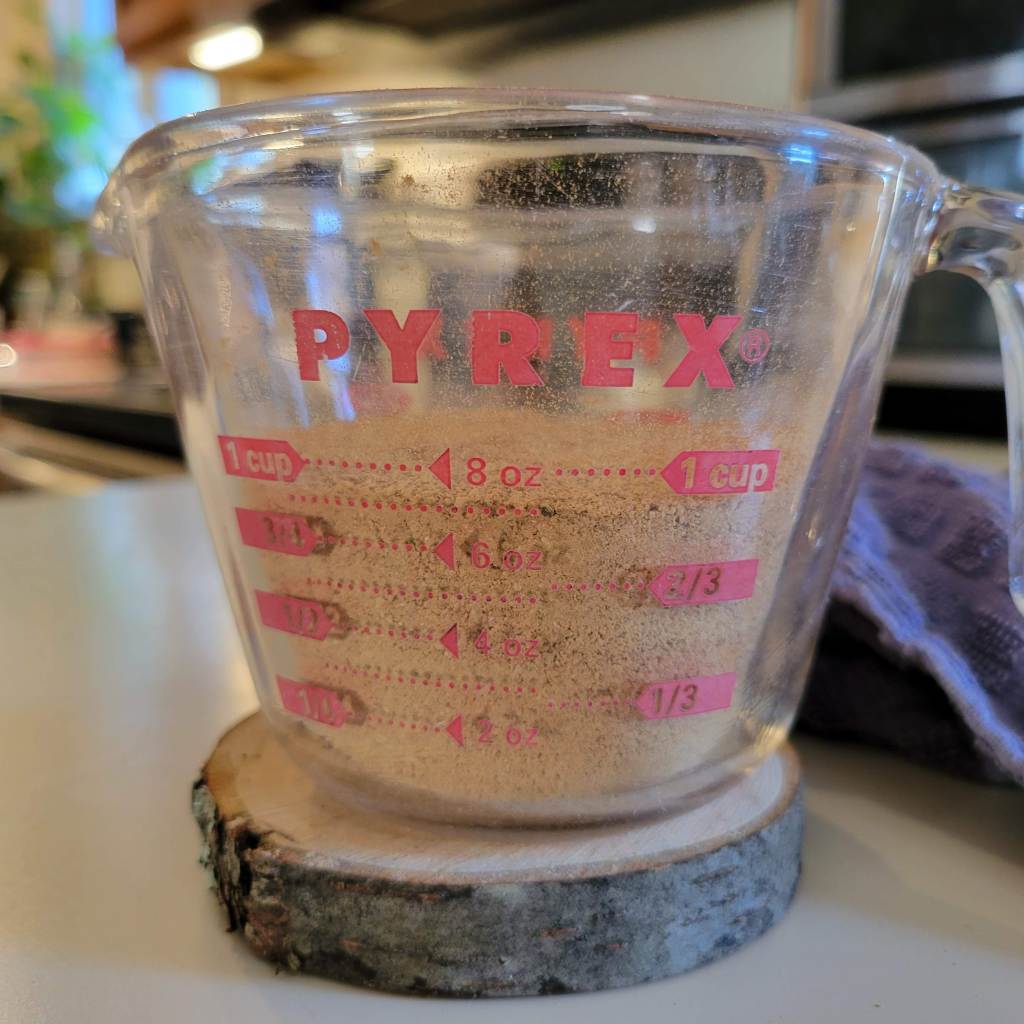I often wonder how ancient humans discovered which foods were edible. Particularly the non-obvious ones. Like globe artichokes (Cynara cardunculus var. scolymus). Who was so desperate for sustenance they tackled those thorny leaves to find the tasty heart inside? Or sunchokes (Helianthus tuberosus). Good grief. Whoever figured out THAT one probably introduced the tubers to the tribe as a practical joke. And then got banished from the tribe immediately once they learned (the hard way) how “musical” it made them. What about eating the inner bark of trees? “Hey guys, check out my Castor canadensis impression!”
Or maybe we’re just insatiably curious. After researching sweet birch (Betula lenta) over the past few months, I decided to try making flour from the inner bark. How crazy does that sound? I just couldn’t pass up the chance. Luckily, the Practical Self Reliance blog already covered the method and even provided instructions as well as a recipe to try.
We harvested a few pieces of birch from a small, crooked tree that needed to be removed for the health of its neighbors. When you look at a cross section of the log, you can clearly see the separate layer of the inner bark.
I tried using a box cutter (like the original blog did) to peel off the outer bark layer, but quickly resorted to a drawknife to scrape it off (also like the original blog). (Well, after I cut myself with the box cutter, my husband took away the sharp tools and did it himself.) I would love to actually peel birch bark to use for crafts, but maybe that’s better done during the warmer months of spring and summer.
The inner bark comes off in crumbly pieces, rather than the curls of the outer bark. When the drawknife produces curls again, you know you’ve gone too deep and have passed the edible layer. The color also changes from yellow to a paler tan color.
We ended up with a decent amount of shavings for a first attempt.
I used the original article’s same approach to drying the inner bark: in the oven at 250 for 30 minutes. Next time, I will try drying the bark on low in my electric dehydrator. I suspect the minty volatile oils didn’t care for the oven’s heat, even at a low temperature like 250.
I pulsed the bark shavings in my food processor, and used a wire mesh strainer to separate out the largest chunks to process again. After a few passes through the food processor, I used my spice grinder for the remaining small bits. (I skipped the mortar and pestle that the original author resorted too for the leftover bits.) I ended up with a cup of flour from a single log that measured about 4″ across and 16″ long.
I figured birch bark flour would be like any other “paleo” flour as far as baking goes. Almond flour, coconut flour, even hazelnut or tapioca flour – they are all just dried, finely ground particles that absorb moisture and provide a certain amount of flavor. Or additional nutrition. (Practical Self Reliance mentions the nutritional value of the birch bark, but doesn’t go into details.) Most of them don’t bind like wheat flour, nor do they have gluten like wheat flour, so it’s unrealistic to expect them to work like wheat flour in most recipes.
I followed her recipe exactly, except for all the things I changed. Just kidding. Sort of. I used a thistle-themed ceramic shortbread pan from one of my kids’ school projects from years ago, rather than rolling and cutting cookies. I suspect this resulted in a thicker shortbread, because it needed a full 20 minutes to cook at 350 F. I waited impatiently for them to cool enough to unmold them.

The cookies were unlike anything I’d had before. The experience could only be described as “eating shortbread peppered throughout with flecks of bark.” I suspect the nutritional benefits mentioned in the original article must have predominantly centered on insoluble fiber, which is largely missing from the modern American diet. My youngest commented that the texture was reminiscent of a trip to the beach. My husband’s one reply to our complaints: you’ve never eaten an MRE! Next time, I’ll do a better job sifting the flour to only contain the finest particles.
In addition to the sandy-textured-consistency, we detected a definite minty note from the remaining wintergreen-flavored oils. We weren’t expecting it, given the original article’s description of her finished cookies. There was no trace of the bitterness she mentioned either. I think my next birch bark experiment (because you know there has to be more) will showcase the mintiness.
Have you gotten in touch with your inner rodent by eating bark? How did the experience go?





I liked it… and regardless of what the children said, considering there is only one piece left of eight??? I’m just sayin!